Making sure your horse is ready for emergencies is a must for every owner. Experts like Elizabeth Barrett and Jesslyn Bryk-Lucy stress the need for being prepared. Having a plan and a kit with the right items can save your horse’s life.
A good emergency kit has important medicines like Bute and Banamine. It also needs basic care items for wounds. Knowing how to use these items is key to keeping your horse healthy.
Key Takeaways
- Assembling an emergency kit is an essential component of horse emergency preparedness.
- Including both basic and advanced horse healthcare products can help stabilize a horse until veterinary assistance arrives.
- Equine emergency kits should be personalized with essential horse care items pertinent to your horse’s specific needs.
- Owners must be knowledgeable in using the emergency kit tools and monitoring vital signs including heart and respiration rates, as well as temperature.
- Regular consultation with professionals like veterinarians Elizabeth Barrett and Jesslyn Bryk-Lucy can better prepare owners for equine healthcare management.
- An emergency kit should be maintained regularly, ensuring medications like antibiotics are prescribed and not used without veterinary consultation to prevent bacterial resistance.
- Being adept at using emergency numbers and knowing when to seek further help are critical skills for horse owners.
Understanding the Vital Role of a Horse Emergency Kit
Horse owners know that health issues and injuries can happen anytime. A horse emergency kit is key for quick and effective care. It helps with minor injuries and keeps the horse stable until a vet arrives for serious cases.
Emergency care for horses starts with knowing when something is wrong. Checking temperature and heart rate is crucial. A horse health kit with the right tools and knowledge helps owners act fast, keeping their horses safe.
In times of an emergency, a comprehensive horse emergency kit can dramatically alter the outcome for an injured or sick horse.
Knowing what to include in your horse health kit and how to use it is vital. Here are some important stats for horse owners:
| Vital Sign | Normal Range | Notes |
|---|---|---|
| Temperature | 99.5–101.5 F | Monitor for deviations as a signal of health issues. |
| Heart Rate | 30-40 beats per minute | Increases might indicate pain or stress; >48 bpm suggests colic. |
| Respiratory Rate | 12-20 breaths per minute | Elevated rates (>20 bpm) may indicate colic or respiratory issues. |
| Capillary Refill Time | 2 seconds | Longer refill time can be a sign of shock or dehydration. |
Knowing vital signs and managing wounds are key. Quick use of antiseptics and bandages helps prevent infections and speeds healing. Every horse emergency kit should have sterile saline, antiseptic cleaners, and bandages.
Having a horse health kit is a must for horse lovers. It prepares you to give the best emergency care for horses. This way, you protect your horses from unexpected health problems.
Strategic Storage Solutions for Your Equine First Aid Supplies
Getting ready and storing your equine first aid box right can make a big difference. It helps you handle horse emergencies better. This part will help you use space well, keep things safe from too hot or cold, and pick the right containers for your horse emergency kit.
Optimizing Space in the Barn and Trailer
Think about where to store your horse first aid kit and make it easy to get to. The barn and trailer are good places to keep it. Use shelves or cabinets that save floor space but keep things close.
Practice getting out quickly to know where your kit is. This helps you stay calm and find what you need fast.
Protecting Supplies from Extreme Temperatures
Choose a place to store your horse first aid kit checklist that keeps it safe from too hot or cold. You might need to change where you store it with the seasons. This keeps medicines and solutions from getting spoiled.
Think about using insulated boxes to keep the temperature steady inside.
Choosing the Right Container for Your Kit
The best container for an equine first aid box is easy to carry, strong, and has separate spots for different things. You might like plastic totes, fishing boxes, or metal toolboxes. They should be waterproof, dustproof, and easy to clean.
Also, check your kit often and replace anything that’s gone bad. This keeps your supplies good to go when you need them.
Here’s a table with important tips for managing your equine first aid kit:
| Consideration | Recommendation | Benefits |
|---|---|---|
| Frequency of Safety Drills | 3-4 times a year | Enhances promptness and efficiency in emergency response |
| Medication Practice | Regular review and replacement of expired medications | Ensures potency and effectiveness of treatments |
| Container Attributes | Waterproof, dustproof, clean, and easy to maintain | Protects contents from environmental factors and contamination |
| Storage Strategy | Use of vertical space and insulated containers | Optimizes storage spaces and protects from extreme temperatures |
Using these smart storage ideas makes you more ready for emergencies. It also keeps your emergency supplies for horses in top shape. This way, you can handle any situation quickly and well.
Comprehensive Checklist for a Horse Emergency Kit
Creating a horse medical kit needs careful planning to have everything ready for emergencies. Here’s a detailed list of key horse first aid kit contents for every horse owner. It helps keep your horse safe.
- Gauze rolls and self-sticking bandages for wound management
- Cleaning solutions like Betadine and sterile water to disinfect wounds
- Ice wraps and syringes for treatment and medication administration
- Bandage scissors, towels, and a thermometer for general care
- Medications including NSAIDs for pain relief and electrolyte paste for dehydration
- A hoof pick and sharp pocket knife, crucial for foot care and general use
- Equine first aid supplies like eye ointments and a stethoscope for routine checks
It’s also vital to have a current horse first aid book and medical records. Include your vet’s contact info in your horse safety kit. This way, you’re always ready.
| Item | Utility | Storage Tips |
|---|---|---|
| Gauze, Bandages | Wound dressing, support | Keep dry and accessible |
| Betadine, Sterile Water | Cleansing wounds | Store in a cool, dark place |
| NSAIDs, Electrolytes | Pain relief, hydration | Check expiration regularly |
| Thermometer, Stethoscope | Monitoring health | Protect from extreme temperatures |
| Books, Medical Records | Information access | Waterproof container |
Choose a strong, easy-to-carry, and waterproof container for your kit. Options include plastic bins, fishing tackle boxes, or toolboxes. Keep it in the barn for easy access. Also, have a second horse medical kit in your trailer for trips or emergencies.
It’s important to regularly check and update your equine first aid supplies. Make sure everything is current, in good shape, and you know how to use it. Being prepared is key to keeping your horse healthy in any situation.
Essential Wound and Injury Treatment Supplies
Quickly treating equine injuries with the right supplies is key for a fast recovery. Knowing what you need for horse injury treatment and care is crucial. It helps keep your horse healthy in emergencies.
Bandaging Materials for Various Injuries
High-quality bandaging supplies are essential for horse injury first aid. You should have gauze rolls, self-sticking bandages, ace wraps, and pillow wraps. These items help you deal with different injuries, from small cuts to big wounds. They protect and support the injury site.
Antiseptics and Wound Treatments
Having the right antiseptics and wound treatments is vital for equine first aid. Chlorhexidine and Betadine clean wounds, preventing infection and helping them heal. Also, include wound treatment ointments like Corona cream to help with recovery and keep the wound area clean.
Ice Packs and Cold Therapy
Cold therapy is important for managing inflammation and pain. Use ice packs or ice wraps to reduce swelling and ease pain. Always check the skin under the ice to avoid frostbite or irritation.
Having these important items in your horse first aid kit is crucial. It helps you treat most common injuries quickly. This improves the chances of a good outcome for your horse.
Necessary Equipment for Equine Emergency Care
When dealing with equine injury response, having the right tools is key. Here’s what you need in your horse’s emergency kit. It’s all about being ready for anything.
- Vet wrap (2″ or 3″): Essential for securing bandages without sticking to the horse’s fur.
- Gauze pads (4×4), necessary for dressing wounds before bandaging.
- Bandage scissors and tweezers: Critical for cutting dressings and removing debris from wounds.
- Digital or traditional rectal thermometer: Important to monitor the horse’s temperature during health assessments.
- Hydrogen peroxide, Betadine, and antiseptic wound cream: Key horse care emergency supplies for cleaning and disinfecting wounds.
- Blood-stop powder and triple-antibiotic eye ointment: Specialized items for bleeding control and eye injuries, respectively.
- Stethoscope and oral syringe: Tools for examining vitals and administering liquid medications.
Your horse first aid essentials should also include general survival tools and emergency equipment:
- Flashlight and extra batteries: Critical for night-time emergencies or low-light conditions.
- Wire cutters and a sharp pocket knife: Necessary for freeing entangled horses.
- Emergency halter and lead rope: Essential for controlling and relocating your horse during tense scenarios.
- Twitch: A tool used to safely hold a horse still during painful procedures.
Preparing a comprehensive emergency horse supplies kit is more than just about medication and bandages. It’s about being ready for any situation. Make sure to check and update your kit regularly. This keeps you ready for any equine injury response that comes your way.
Having these supplies means you’re always ready to take care of your horse in emergencies.
Must-Have Medication and Supplements for Emergencies
Having the right medications and supplements in your horse emergency care kit is crucial. It can save time and possibly your horse’s life. It’s not just a precaution; it’s a must for every horse owner.
Pain Management with NSAIDs
NSAIDs like phenylbutazone or flunixin meglumine are key. They manage pain and inflammation from injuries or illnesses. They are essential for any emergency kit.
Dehydration Prevention with Electrolytes
Dehydration is a big risk in emergencies, especially if your horse won’t drink or has lost a lot of sweat. Electrolyte pastes or solutions help keep minerals balanced. This encourages hydration and prevents health problems.
Equine Sedatives for Stressful Situations
Sedatives are needed for stressful situations like transport or injuries. Products like Dormosedan gel help in these times. They keep your horse calm without causing stress.
Make sure your emergency kit also has first aid supplies. Include tools like thermometers and stethoscopes. These help measure vital signs and show your horse’s condition in emergencies.
| Medication/Supplement | Use | Frequency of Check/Replacement |
|---|---|---|
| NSAIDs (e.g., Banamine, Bute) | Pain and inflammation management | Check every 3-6 months |
| Electrolyte Paste | Prevent dehydration | Check every 3-6 months |
| Sedatives (e.g., Dormosedan) | Calming during transport or treatment | Check annually |
It’s important to regularly check and update these drugs. This ensures they are fresh and ready to use. Keeping your emergency kit up-to-date makes you ready for emergencies with confidence.
Recognizing When to Call the Vet for Your Horse
Knowing when to call a vet for your horse can save its life. It’s important to have a horse injury care kit ready. But, it’s also key to know when symptoms need a vet’s help. Here are some tips to help you decide when to call for an emergency.
Identifying Serious Injuries and Conditions
Horses can face serious conditions that need vet care right away. Look out for signs like a lot of bleeding, suspected broken bones, or shock. Shock signs include being very tired or having a fast heartbeat.
Important to note: If your horse seems uncomfortable or acts strangely, like standing alone or being aggressive, see your vet fast. They can check for hidden injuries or sickness.
Monitoring Vital Signs and Knowing the Norms
Watching your horse’s vital signs is key in emergency care. A healthy horse’s temperature is between 99 and 101 degrees Fahrenheit. Their pulse should be 28 to 42 beats per minute, and they should breathe 8 to 16 times per minute.
If your horse’s temperature goes up, it might have an infection. A fast pulse can mean pain or distress. Changes in breathing can show respiratory problems or other issues.
Pro Tip: Eye Care and When to Seek Help
Eye problems in horses, like swelling or tearing, need quick attention. Even small injuries can get worse fast without treatment.
- Common signs that necessitate a vet visit: cloudiness, excessive squinting, and sudden vision problems.
- Immediate action: while waiting for your vet, gently clean the eye with saline solution. But don’t touch the eye with your hands or any cloth.
Good emergency care is not just treating injuries. It’s also knowing when to get professional help. Keeping your horse injury care kit up to date and knowing how to use it can save your horse’s life. Early detection and proper care can greatly improve many emergency cases.
Maintaining and Upgrading Your Horse Health Kit
Keeping a horse first aid kit ready is crucial for emergency preparedness. Horse care essentials need regular checks and updates. This ensures your horse stays healthy and safe.
It’s wise to review your horse first aid kit items every three months. This helps avoid expired meds and broken tools. It keeps your kit ready for new health care and first aid solutions.
| Item | Check Frequency | Usage Notes | Expiration Monitoring |
|---|---|---|---|
| NSAIDs (e.g., Phenylbutazone) | Quarterly | Under veterinary guidance | Check bi-annually |
| Electrolytes & Pain Relief Medications | Quarterly | Administer post-vet consultation | Annually |
| Gauze, Bandages | Each use | Essential for dressing wounds | N/A |
| Antiseptic Solutions (e.g., Betadine) | Quarterly | Critical for cleaning wounds | Check annually |
| Disposable Gloves | Quarterly | Maintain hygiene during treatment | N/A |
Having a good relationship with your vet is important. They can suggest the best horse healthcare products for your horse. This ensures your horse gets the best care in emergencies.
Use clear, strong bags or dividers in your kit. They help you quickly find and use tools in emergencies. This makes your response faster and more effective.
Stay up-to-date with your horse’s health and new horse care essentials. As equine care changes, so should your first aid kit. This keeps you ready with the best tools and resources.
Conclusion
Having a complete horse first aid kit is crucial for horse lovers. A well-stocked horse 1st aid kit is more than just a convenience. It’s a key part of caring for your horse. This guide has shown you the basic tools and resources you need for emergencies.
From treating cuts to handling eye injuries, each item in your kit is vital. It helps keep your horse healthy. Knowing how to use these tools is just as important as having them.
Knowing how to use your equestrian first aid kit is key. Your horse’s health depends on your quick action and first aid knowledge. Being ready for small problems can prevent big health issues.
Knowing your horse’s normal health signs is also important. For example, their temperature should be between 99.5 and 101.5 degrees Fahrenheit. This knowledge is as important as the supplies in your kit.
Preparation goes beyond just first aid. Make sure you have enough food and water for your horse in case of emergencies. Microchipping and evacuation drills are also important for your horse’s safety.
Keeping your kit up to date and practicing first aid can save lives. It shows your love and care for your horse. Being prepared means you can enjoy your horse’s company for many years.









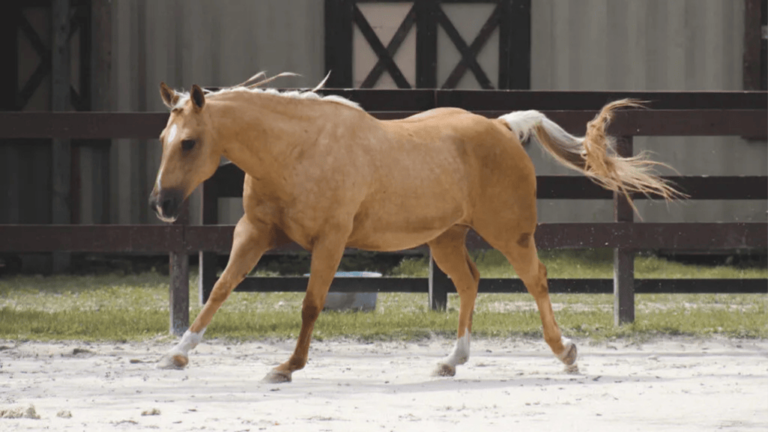



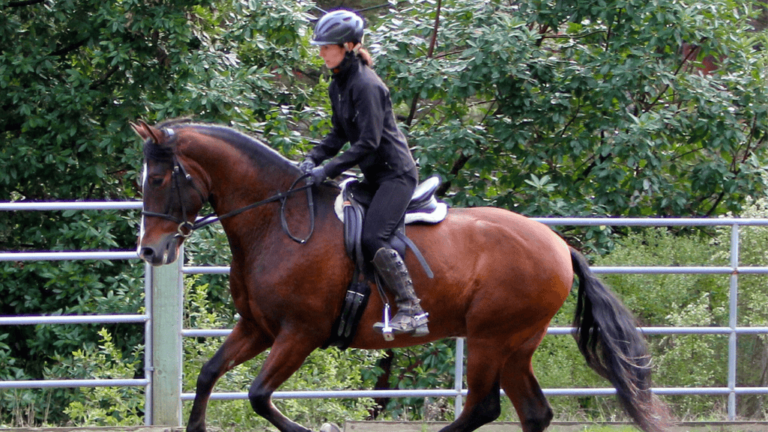
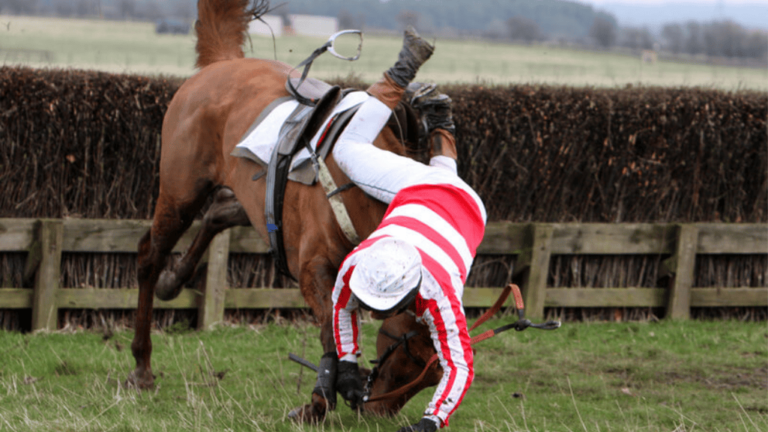
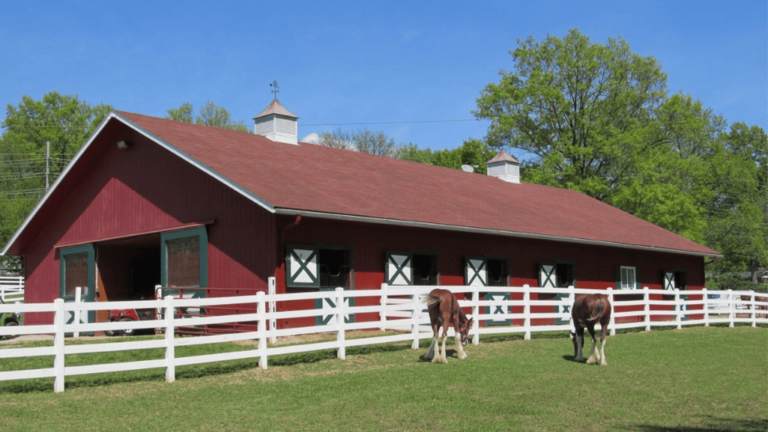

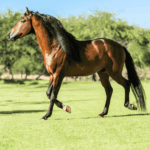
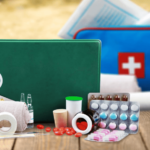
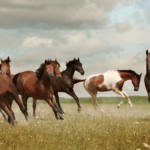

[…] misaligned teeth, and malocclusions can make eating hard. Using tools like the horse tooth rasp in dental procedures helps fix these problems. This keeps the horse’s teeth healthy and working […]
[…] Also, preparing for emergencies with these special horse breeds means having a well-stocked emergency kit. It should include basic items and things specific to their needs. For tips on making a complete kit, visit here. […]